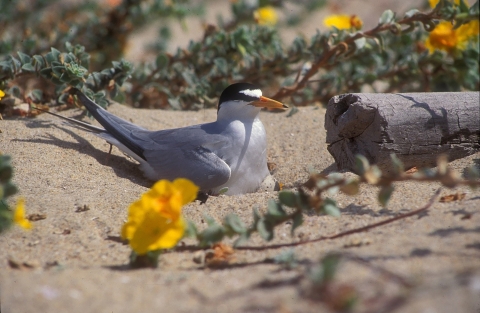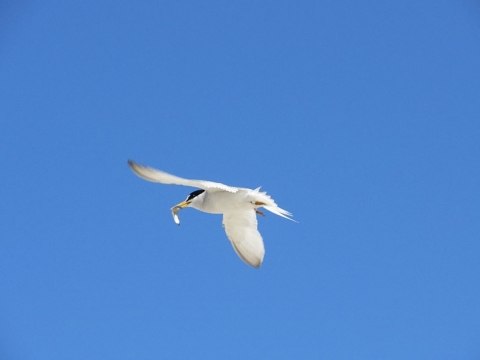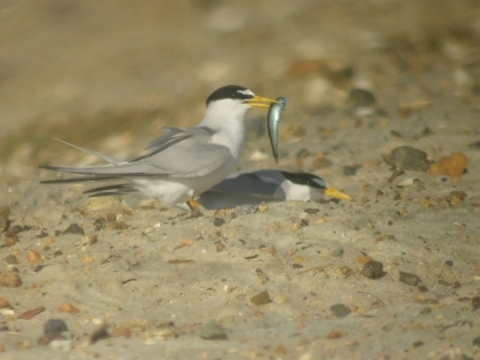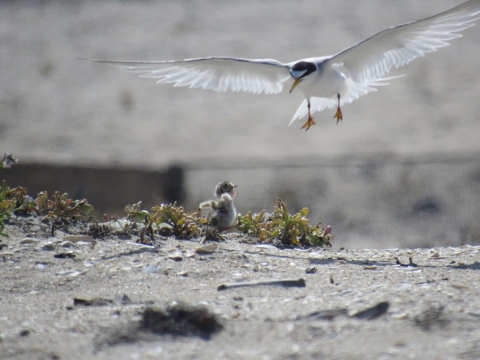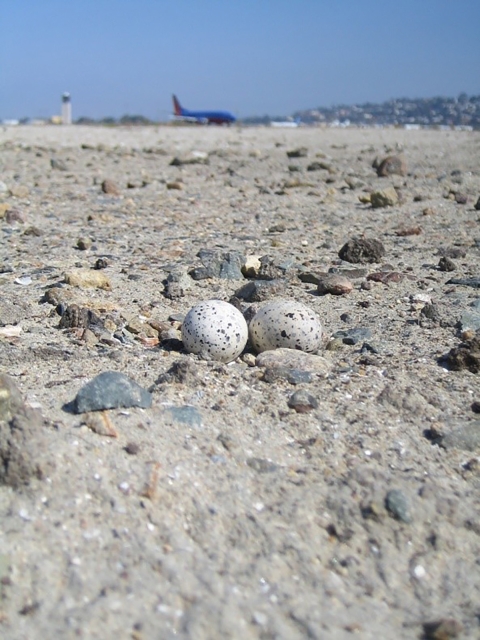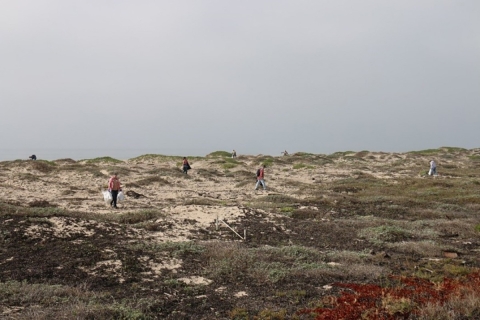California has once again welcomed tiny and graceful visitors to beaches, estuaries, river mouths and lagoons. The federally endangered California least tern (Sterna antillarum browni), the smallest of the tern species, returns to California — from the bay to the border — each year during the first or second week of April to feast, rest, and nest.
Least terns hover over the surf zone or shallow estuarine waters and can be seen plunging into the water from 10–30 feet to capture small, slender-bodied fish like anchovies and topsmelt. They target and capture the fish in the top few feet of the water column.
For the first few weeks after their arrival, least terns prepare for nesting by spending time fishing, resting, and courting. A tasty topsmelt is the perfect gift!
Least terns nest directly on un-vegetated sandy areas of beaches, coastal strand and salt flats. Each pair creates a small depression in the sand and may even do some decorating using small shell fragments. One or two eggs are laid, and the pair spends about three weeks incubating the vulnerable egg(s) before hatch.
Many California beaches have become too busy with human activity for least terns to nest, so the U.S. Fish and Wildlife Service and its partners collaborate to protect human-made nest sites, as well as discrete segments of natural beach habitat. These nest sites, which are in surprising locations, are part of the tern’s recovery plan to compensate for impacted habitat. For example, least terns now nest on several sites adjacent to airports, military training ranges, port terminals, and salt production facilities.
Created sites and natural beach habitat have a few things in common: they are close to least tern food resources, they have little vegetation and human traffic, and they are flat and usually sandy. Protected areas are often marked with signage and fencing, and may require routine removal of weedy vegetation to maintain open, sandy conditions, and predator management to sustain successful nesting.
Ways to help conserve the California least tern include abiding by natural resource signage on beaches, keeping dogs on leash in coastal areas, keeping beaches clean of food and trash that can attract nest predators, and assisting with beach cleanups, pre-season habitat restoration events, and locally coordinated volunteer efforts to document nesting and predators.
Contact to find out more about volunteer opportunities in the Service's California Great Basin Region:
Northern California — susan_euing@fws.gov
Central Coast — david_sherer@fws.gov
Southern California — sandy_vissman@fws.gov
Wishing the tiny terns a successful nesting season!



